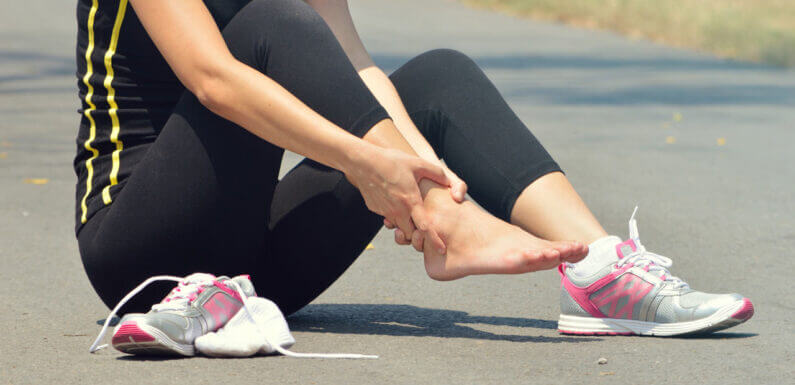
If your goal is to be an athlete of the highest level or weekend athlete, if you participate in sports, you’ve likely suffered injuries at some moment in time. Most sports injuries involve strains and swelling of muscles, knee injuries, fractures, and dislocations.
Some sports injuries are acute injuries that occur due to an unexpected event that can cause noticeable symptoms. The effects of excessive use can be subtle at first or appear gradually over time.
Common Sport Injuries
The term “sports injuries” refers to the types of injuries caused by exercise or sports. In general, sports injuries can be classified into two types:
- Acute sports injury
- Chronic sports injury
It is crucial to recognize the two types of damages as it will help you get a better idea of the best way to treat these types of injuries.
1. Head Injury
The most frequent head injury is called a concussion which is a brain injury resulting from an injury at the forehead, collision, or violent shaking. Concussions are traumatic brain injuries that can affect cognitive function.
2. Shoulder Injury
The most frequent shoulder issue is either inflammation or tears of the rotator cuff. But, other ailments like frozen shoulder or tear of the labrum could mimic the symptoms of an injured rotator or cuff and should be evaluated as a possible diagnosis.
3. Elbow Injury
Tendon injuries in the elbow area, such as tennis elbow and golfer’s elbow, are among the most frequently encountered sports-related ailments that affect the joints of your elbow.
4. Wrist Injury
A broken wrist is one of the most common types of broken bones among athletes. In the event of a fall, landing on an arm that is stretched out, as an example, could cause a wrist fracture that needs treatment at a sports rehabilitation center.
5. Finger Injury
Jammed fingers describe different kinds related to sports injury to the fingers. Finger joint dislocations and swelling of the fingers are typical, particularly in soccer and basketball.
6. Spine Injury
Lower-back muscle strains are among the most frequent spine injuries in the sport. The pain can be intense and severe, causing people who suffer from it to think that a severe structural issue may be present. Among other spine-related problems, lumbar strains are the most common.
7. Knee Injury
Anterior knee pain, also known as patellofemoral pain syndrome, is a type of inflammation of the cartilage on the bottom of the kneecap, which causes irritation and grinding.
8. Ankle Injury
Ankle sprains are the most frequent injuries to the ankle joint. A repeated ankle sprain can be pretty common when one is suffering from an ankle sprain A proper rehabilitation program following these injuries will help avoid re-injuring your ankle joints.
Chronic Sports Injury
The long-term repetition of motion causes chronic injuries, which is typical in endurance sports like cycling, swimming, and running. Therefore chronic injuries are commonly described as overuse injuries that result from the overuse of an area of the body while playing an activity or exercising for an extended period.
- Stress fractures
- Tennis elbow
- Shin splints
- Runner’s knee
- Heel inflammation
- Ankle sprain
- Groin pull
- Hamstring strain
These injuries are usually due to a simple technique, advancing too quickly, or doing too many movements when playing sports. They are generally related to long-distance cycling, long-distance running, and swimming.
Acute Sports Injury
However, acute injuries are a type of injury that happens suddenly and is often related to trauma like breaking bones, tearing muscles, or bruising. It may be the result of crashing into another athlete.
Acute injuries include:
- Broken bones
- Concussion
- Dislocated shoulder
- Fractures
- Muscle sprains and strains
- Rotator cuff tears
Overuse injuries in sports outnumber sudden acute injuries in nearly all sports. Still, since these injuries aren’t immediately disabling, they receive less attention from medical professionals than injuries that result in an abrupt and immediate impairment.
Prevention and Treatment
Chronic Sports Injury
Because this type of injury is often because of excessive use, it’s essential to rest well and not exercise too much. Always wear the correct equipment, warm up, and cool down before and after the activity.
One of the most effective ways to treat a chronic injury is by rest or ice and anti-inflammatory drugs. If you treat the injured area, it will be back playing within a matter of minutes.
Acute Sports Injury
To avoid this injury from coming back, it is crucial to get back to your routine slowly. Begin by slowly introducing gentle stretching after the swelling has decreased. It would help if you continued stretching and moving in the first few weeks until you feel at ease with your routine and return to exercise.
In the case of an acute injury, Ice can help reduce the pain caused by the damage and help reduce swelling. It is also essential that you elevate the injury over your heart.
Diagnosis and Treatment
A physician often assesses chronic and acute injuries for sports or orthopedists; however, non-physician experts trained to diagnose and treat injuries such as athletic trainers or physical therapy may as well.
Based on the type of injury and the degree of disability or pain, a sports injury doctor might recommend X-rays to rule out fractured bones. Although some broken bones may be apparent on the first scan, others are not apparent until after a few days when healing has been established.
Other diagnostic imaging tests can be ordered to identify soft-tissue damage. These tests can be scheduled at the initial visit or following a period when treatment is not effective and includes these.
- MRI Scan: Diagnostic imaging typically makes use of MRI scans. For the diagnosis of joint injuries, muscle injuries and fractures, sprains, and head injuries sustained in activities. MRIs utilize radio waves within the strong magnetic field to look at the musculoskeletal structure, including muscles, bones, tendons, ligaments, nerves, and muscles.
- Ultrasound: is a helpful tool for diagnosing tendon injuries; during Ultrasound, the sound waves create instantaneous images of thin, soft tissue. When you undergo an ultrasound radiology exam, the sports injury specialists might ask you to move your joint to observe how the move impacts the tendon.
- CT scans: The CT scan gives a more accurate view of bones and tissues. The test may reveal hairline fractures and minor imperfections within complex joints.
The chronic sports injury treatment you receive will be determined by the severity and location of the injury. The initial treatment for most injuries to the body is focused on managing inflammation and encouraging the healing process.
